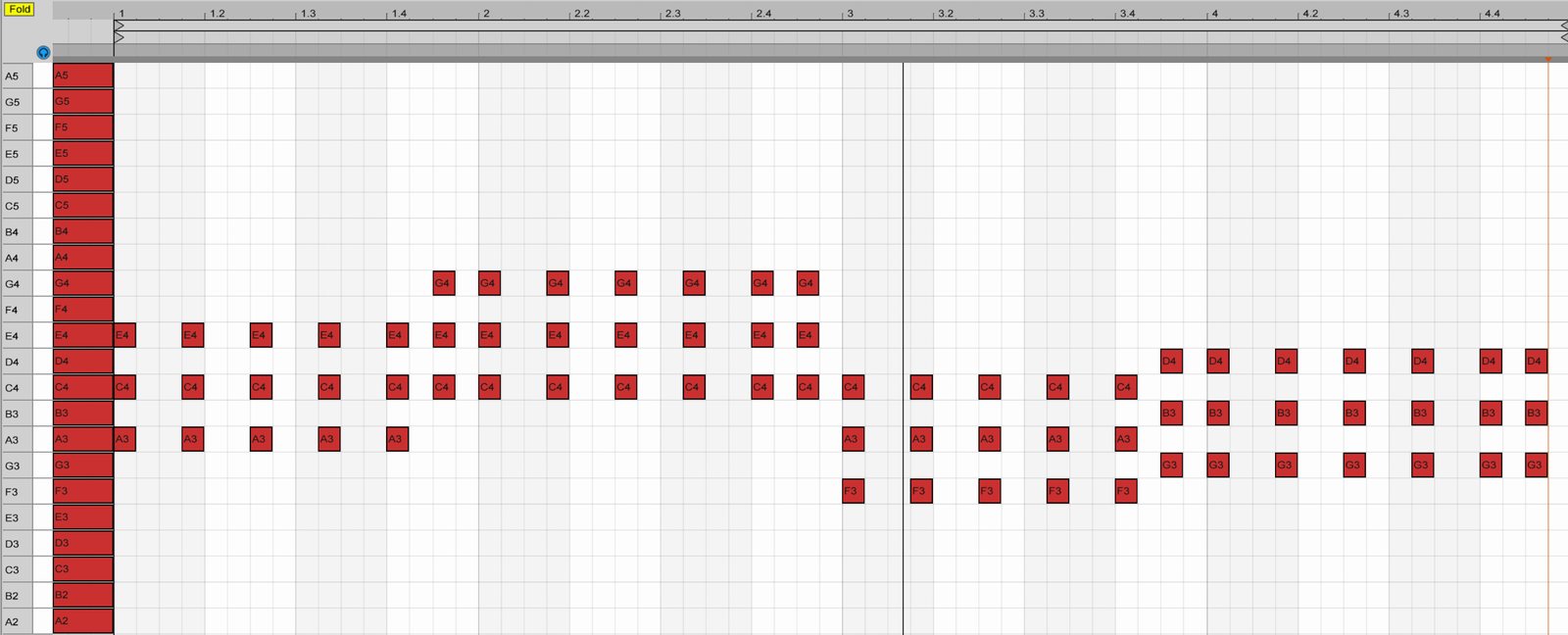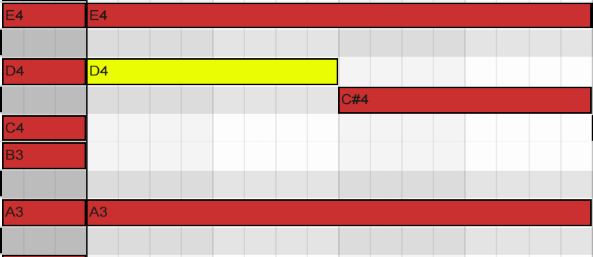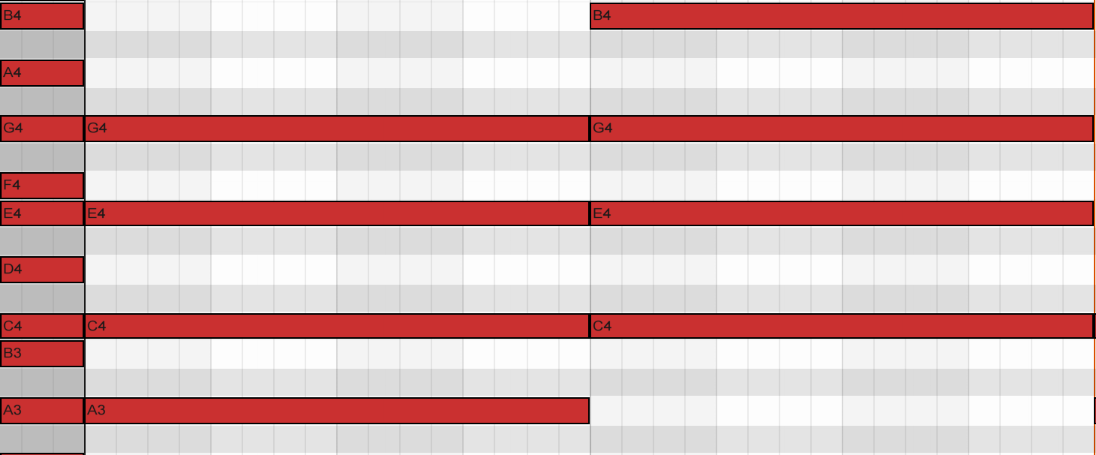Catchy chords and chord progressions are often the basis of what makes a really memorable song – regardless of genre – so today we’re going to look at how to write KILLER chord progressions!
In this post we look at changing some different elements of bog-standard, quite “boring” chord progressions, to come up with something more interesting – more memorable!
We go through building normal chords from scratch (no music theory knowledge necessary!), then we look at spicing them up a bit 🌶🌶🌶.
There’s also a video version at the bottom of this page, so be sure to check that out (I go a bit berserk on the ad lib at the end 😜)
In order, we’ll be looking at:
Chord Progressions
1. Building chords from scratch
2. Chord Rhythm
3. Chord Quality
4. Sus 2 and Sus 4 Chords
5. 7th 9th and 11th Chords
6. Chord Inversions
OK…let’s dig in:
1. Building chord progressions from scratch.
This is a case of drawing in a template in your DAW’s piano roll editor of every note in a scale (find out more here).
(In Ableton Live you can then press the “Fold” button, and you’ll be left with only the notes in that scale, which makes writing chords super-easy)
When you have your template, you just count up two notes from the bass note of the chord you’re working on, draw in a note, then count up two more from that and draw in another note. You’ll then have a standard diatonic triad (find out more here).

Right…from following point 1 (and the other post I linked to), you should now have a pretty standard chord progression, so let’s spice things up a bit:
2. Chord Rhythm
There are two main options here, and when combined can really add life to a boring chord progression. The first:
You can start your chords slightly before or after the beginning of a bar (usually by an 8th note).

The second is by using syncopated chord stabs (we’ve all heard them). Trying using 16th notes here, and leaving a gap or 2 x 16th notes in between each stab.

Check out the results!
3. Chord Quality
The “quality” of a chord is determined by the intervals of the notes within it in relation to each other. The simplest two chord qualities are i) a major chord and ii) a minor chord.
By moving the middle note of a three note triad chord either up or down a semitone, we can change a chord’s quality, and break out of using notes only with the key we’re working in. If you’re using Ableton’s fold button you’ll need to now turn it off to access the notes outside of the key.

The chord of A minor – all notes are within the scale of A minor, so it’s a diatonic chord

The chord of A major – by moving the 3rd up a semitone, the quality has changed. The 3rd is now not a note from within the scale of A minor, so it’s a non-diatonic chord
4. Sus 2 and Sus 4 Chords
Sus 2 and Sus 4 chords scared me for years! Just the names look super egg-head professor! It’s not too bad, though. The “Sus” stands for “Suspended”, and these are usually used to create a bit of tension before resolving back to the normal chord.
A Sus 2 chord is where you move the third of the chord to the second interval, and a Sus 4 is where you move the third of the chord to the fourth interval.

A “Sus 2” chord

A “Sus 4” chord
5. 7th 9th and 11th Chords
These are my favourite, and super simple. Once you have your standard triad with three notes – a 1st, and 3rd (either major or minor) and a 5th – just add another note at the 7th (or 9th, or 11th, or 13th) interval in the scale you are writing in.
If you have a minor 3rd, you’ll want a minor 7th…if you have a major 3rd, you’ll want a major 7th.
You can either have major or minor 7ths, and they give chords a “lush” quality…perfect for Deep House or Future Bass. Check this post out for more details.

A Major 7th

A Minor 7th
6. Chord Inversions
This is simply changing the order of the notes in each chord…great for bringing the range of notes closer together to bring a more “cohesive” feel. Simple shift the most upper or lower notes of each chord by an octave up or down to bring them nearer all the other notes in the chord progression. When you underpin this with a bassline hitting the original bass notes, it ties everything together nicely.

Here I’ve made the first two chords of the progression 7th chords in their normal form

Here I’ve inverted the second chord by dropping the top note down an octave
Stick ’em all together, whack on some beats and a bass line, and we’re left with this!

A KILLER chord progression!
So those are a few ideas for you to try out! Sometimes if you try and use all of them at the same time the chords can start sounding cluttered, so always trust your ears.
*If you use “Captain Plugins” by Mixed in Key, you can click here for my tutorial on how to apply these chord techniques using that software. You can get 30% off Captain Plugins through EDMtips. Click here to find out more.
Do you have any idea for spicing up standard chord progressions, or do you have any questions? Let me know in the comments below 🙂
